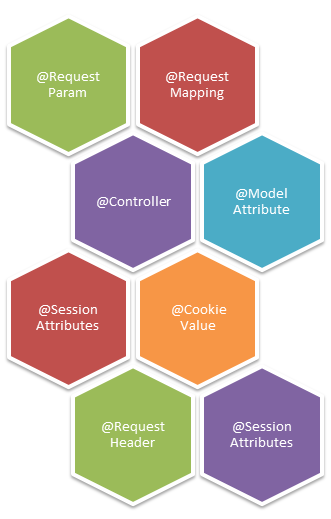

- #Java spring annotations manual#
- #Java spring annotations software#
- #Java spring annotations code#
- #Java spring annotations free#
Struts or EJB application require application server to run but spring application doesn’t need an application server. Spring framework provides transaction management interface for transaction management. A programmer can use only needed modules and ignore the rest.ĭependency injection and POJO model makes easy to test an application. Spring framework is designed in modular fashion. Spring framework is light weight framework because of its POJO model implementation.Īs we know that struts forces programmer to extend Action Class but spring framework doesn’t force a programmer to extend class or implement interface given by Spring API.īecause of dependency injection concept, spring objects are loosely coupled. It is an open source and light weight framework created by Rod Johnson in June 2003.
#Java spring annotations software#
Annotations were the secret behind Spring Boot's ability to create efficient and maintainable applications, making Java development great once more.Īs we left this enchanted land, we carried with us the knowledge that in the world of Spring Boot, annotations were the threads that wove the tapestry of modern software development, and they would continue to cast their spells for generations of developers to come.Spring Framework is one of the most popular Java EE frameworks.
#Java spring annotations code#
We marveled at how these annotations simplified the development process, reduced boilerplate code, and enhanced code readability.

These personalized enchantments promoted code consistency and brought forth a sense of harmony in the land of Spring Boot.Īnd so, our journey through the magical realm of Spring Boot and its annotations came to an end. In this world, developers were encouraged to craft their own custom annotations, encapsulating and sharing common configurations or behaviors.
#Java spring annotations manual#
These enchantments ensured the integrity of input data, sparing developers from the perils of manual validation checks and error handling. These incantations, combined with the magic of Hibernate, enabled developers to effortlessly interact with relational databases.Īs we delved deeper, we encountered validation spells in the form of and. In the realm of data access and Object-Relational Mapping (ORM), Spring Boot unveiled the power of, , and annotations. Logging, security, and transactions were no longer tangled webs but modular aspects that could be applied across the codebase.

Our journey also led us to the world of Aspect-Oriented Programming (AOP), where the, ,, and annotations allowed developers to weave enchanting spells of cross-cutting concerns.
#Java spring annotations free#
Unit testing became a joyful experience, free from the shackles of cumbersome manual dependency management. Fields, constructors, and setter methods adorned with these annotations paved the way for clean and loosely coupled code. In this land, dependencies were injected effortlessly using the and annotations. The code became a canvas, painted with the elegance of these annotations, making URL routing a breeze.īut the magic didn't stop there.

The, ,, and their brethren allowed developers to define the paths and HTTP methods for handling requests. The metadata provided by these annotations can be used both at compile- and run-time, for example, to generate boilerplate code, or interact with the user classes through reflection. Also, many libraries and frameworks, such as Spring and Lombok, define their own annotations. In the heart of the Spring Boot kingdom, we discovered the power of annotations for request mapping. In Java, there is a set of built-in annotations. With a single stroke, developers could simplify application setup and configuration, leaving behind the labyrinthine paths of XML files. It was no ordinary annotation it combined the powers of, , and. This was the essence of the Inversion of Control (IoC) principle, where Spring Boot managed the lifecycles of these components, like a conductor leading a symphony.Īs we ventured further into this enchanted forest of code, we encountered the magnificent annotation. By doing so, they made these classes eligible for the magical gift of dependency injection. In this mystical land, developers used the, , and annotations to breathe life into their classes. Our journey into the world of Spring Boot begins with the humble task of declaring beans and components. But the true secret to Spring Boot's magic lay in the art of annotations. It was revered by developers far and wide for its ability to simplify the creation of robust and scalable applications. Once upon a time in the realm of Java development, there was a powerful and enchanting framework known as Spring Boot. Title: "Unraveling the Magic of Spring Boot: A Journey Through Annotations"


 0 kommentar(er)
0 kommentar(er)
